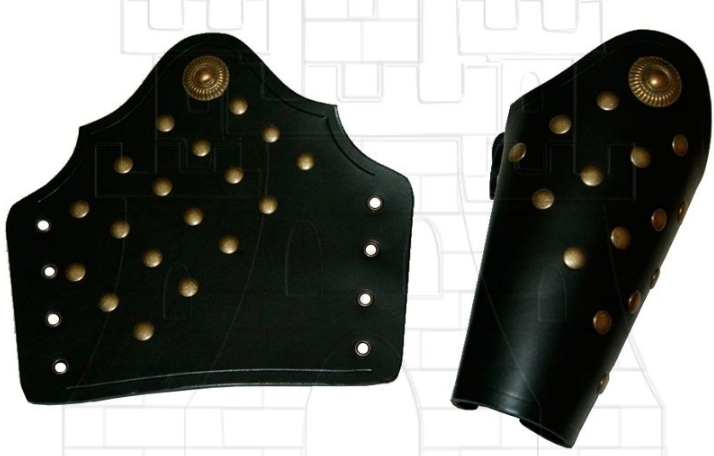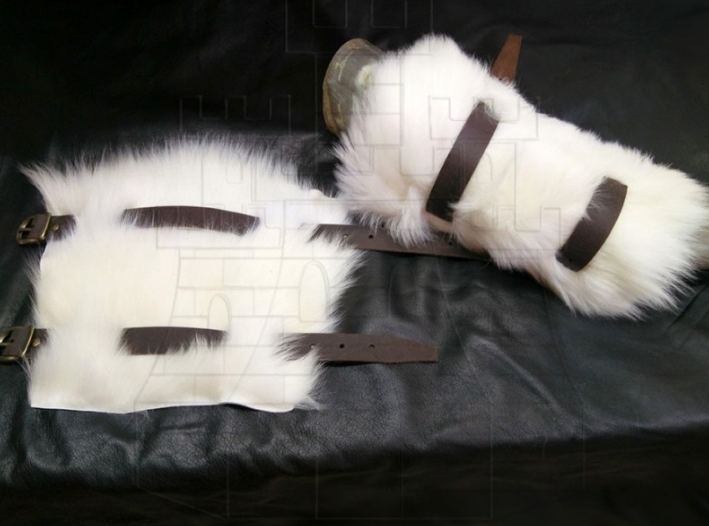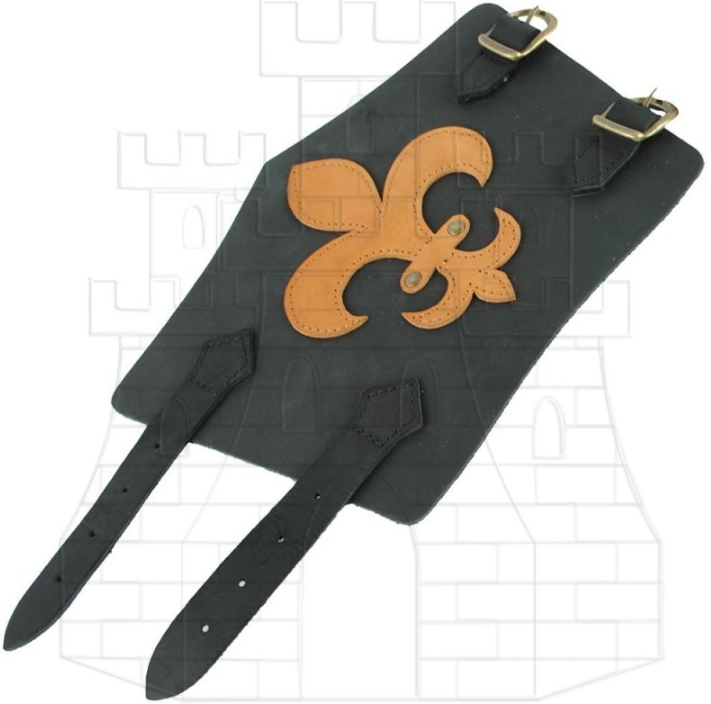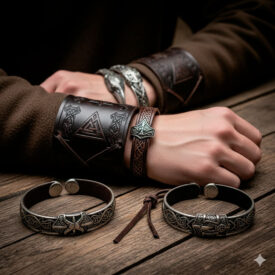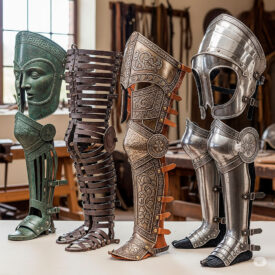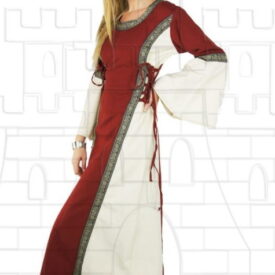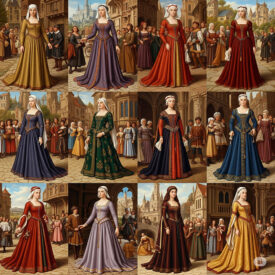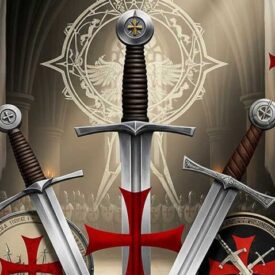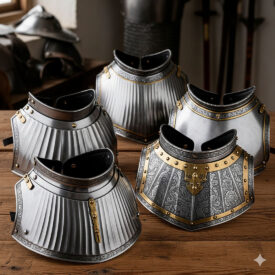Did you know that the medieval bracer not only protected but also spoke of the status, loyalty, and craft of its wearer? If you’re interested in history, historical reenactment, collecting, or simply looking for a sturdy and stylish bracer, this comprehensive guide explains everything you need to know to choose, care for, and understand these unique pieces.
Why the medieval bracer was essential in combat
The medieval warrior lived in a world where war was part of daily life. The arm was fundamental for wielding a sword, handling a spear, or holding a shield. A cut or bruise could put even the most skilled out of action, which is why the bracer was not merely an adornment: it was functional protection. Medieval bracers covered from the wrist to the elbow and were designed to absorb impacts, stop cuts, and, in some cases, distribute the force of a blow.

History and evolution: from leather to mail and metal
During the Middle Ages, arm protection evolved according to needs and technology. Initially, the most common solutions were hardened or padded leather. With the advance of blacksmithing and metallurgy, maille appeared, followed by articulated metal plates. Each advance meant better performance, but also greater weight and cost.
Leather bracers remained popular because they were lighter, relatively inexpensive, and easy to repair. In addition, leather allowed for decorations: reliefs, embossing, and rivets that distinguished an army, an order, or a family.
Main types by material
- Leather: flexible, lightweight, and adaptable. Excellent for quick movements and prolonged combat.
- Metal: greater protection against cuts and punctures; ideal for full armor, but heavier.
- Maille: good balance between protection and mobility; resistant to cuts and useful under plates.
- Composite materials: leather reinforced with plates, rivets, or metal scales to combine advantages.

Design and ornamentation: more than just protection
Bracers not only protected: they were canvases for symbols, heraldry, and craftsmanship. Motifs such as the rampant lion, the fleur-de-lis, or geometric patterns indicated loyalty to a lord, belonging to an order, or simply good aesthetic taste. Rivets and scales created textures that reinforced weak points and, at the same time, offered visual identity.
Practical decoration
Rivets were not just ornamental: they fixed reinforcements and plates. Leather embossing preserved fiber and prevented premature wear. Moreover, designs could indicate function: a combat bracer was distinguished from a ceremonial one by its robustness and the absence of excessively delicate motifs.
Artisan manufacturing: how medieval-inspired bracers are made today
The medieval bracers we show you are handcrafted by expert leather artisans. The process combines traditional techniques with modern tools to ensure resistance and finish. Quality leathers are selected — cow, sheep, lamb — and worked with tanning and reinforcement processes to increase durability.
Basic steps of craftsmanship
- Leather selection: thickness, flexibility, and texture are chosen according to use.
- Cutting and pattern: the mold that will cover the wrist to the elbow is drawn.
- Reinforcement: insertion of internal layers or plates for greater protection.
- Decoration: embossing, stamping, and placement of rivets or hardware.
- Finishing: varnishes, oils, and sealing for protection against humidity.
Materials in detail: advantages and trade-offs
Understanding the properties of each material will help you choose a bracer according to your needs: historical reenactment, LARP, collecting, or practical use.
Leather
Advantages: lightweight, comfortable, adaptable to the arm’s shape, and aesthetically versatile. Ideal for reenactments and for those seeking authenticity without the weight of metal. Trade-offs: less protection against blunt weapons and the need for maintenance to prevent dryness and breakage.
Metal
Advantages: maximum protection against cuts and punctures, imposing appearance. Trade-offs: weight, risk of oxidation without maintenance, and less comfort during long periods.
Maille
Mixed advantages: good protection against cuts, better flexibility than full plates. Trade-offs: complex to manufacture and heavy if not well-dimensioned.
Comparative table: materials, protection, and recommended uses
| Material | Protection | Weight | Recommended Use |
|---|---|---|---|
| Reinforced Leather | Medium (good against light cuts) | Light | Reenactment, LARP, historical daily use |
| Metal (plates) | High | Heavy | Historical combat, collections |
| Maille | High against cuts | Medium-High | Simulated combat, reinforcement under plate |
| Metal scales on leather | High at points | Medium | Reenactment, functional aesthetics |
How to choose your medieval bracer: practical guide
Choosing the right bracer depends on several factors: purpose (realistic or decorative use), budget, comfort, and authenticity. Below is a checklist to guide you:
- Define the use: combat, reenactment, LARP, or aesthetics? This will determine the material and thickness.
- Measure your arm: take the measurement from wrist to elbow and the circumference to ensure a good fit.
- Consider the weight: if you’re going to wear it for many hours, prioritize reinforced leather or light maille.
- Check the finishes: well-fixed rivets, strong stitching, and bevelled edges to prevent chafing.
- Ask about maintenance: some leathers need specific oils; metal may require anti-rust varnish.
Tips for reenactors and historical fighters
If you participate in simulated combat, look for bracers with internal reinforcements and durable seams. Avoid adornments that could get caught. For added safety, combine bracers with pauldrons or additional protections.
Care and maintenance to last generations
Care depends on the material. Leather bracers thrive with gentle cleaning and specific oils; avoid prolonged exposure to water and direct sunlight. Metal requires immediate drying after rain and periodic applications of anti-rust products or wax. Store pieces in dry, ventilated places.
Gallery of handmade examples
Artisans continue to reinterpret historical designs with excellent results: from heraldic motifs to pieces with visible rivets and metal scales. Below are some real examples that combine aesthetics and functionality.
Where to buy and useful links
If you already know what you’re looking for, you’ll be interested in quality handmade options. Specialized stores offer pieces created by artisans who work leather and metal traditionally, with the advantage of being able to choose sizes, finishes, and personalized details.
VIEW MORE MEDIEVAL BRACERS | VIEW OTHER PERIOD BRACERS
The medieval bracer is a piece that combines history, technique, and beauty. Choosing well means considering use, material, and care. If authenticity attracts you, opt for quality leather and artisanal finishes; if you need maximum protection, choose metal or reinforced combinations. Whatever your choice, a well-made piece will accompany you for years and tell stories in every mark and embossing.
Ready to choose yours? Look at the options, measure your arm, and care for your bracer: that way you’ll protect your history and your arm with the same effectiveness.

